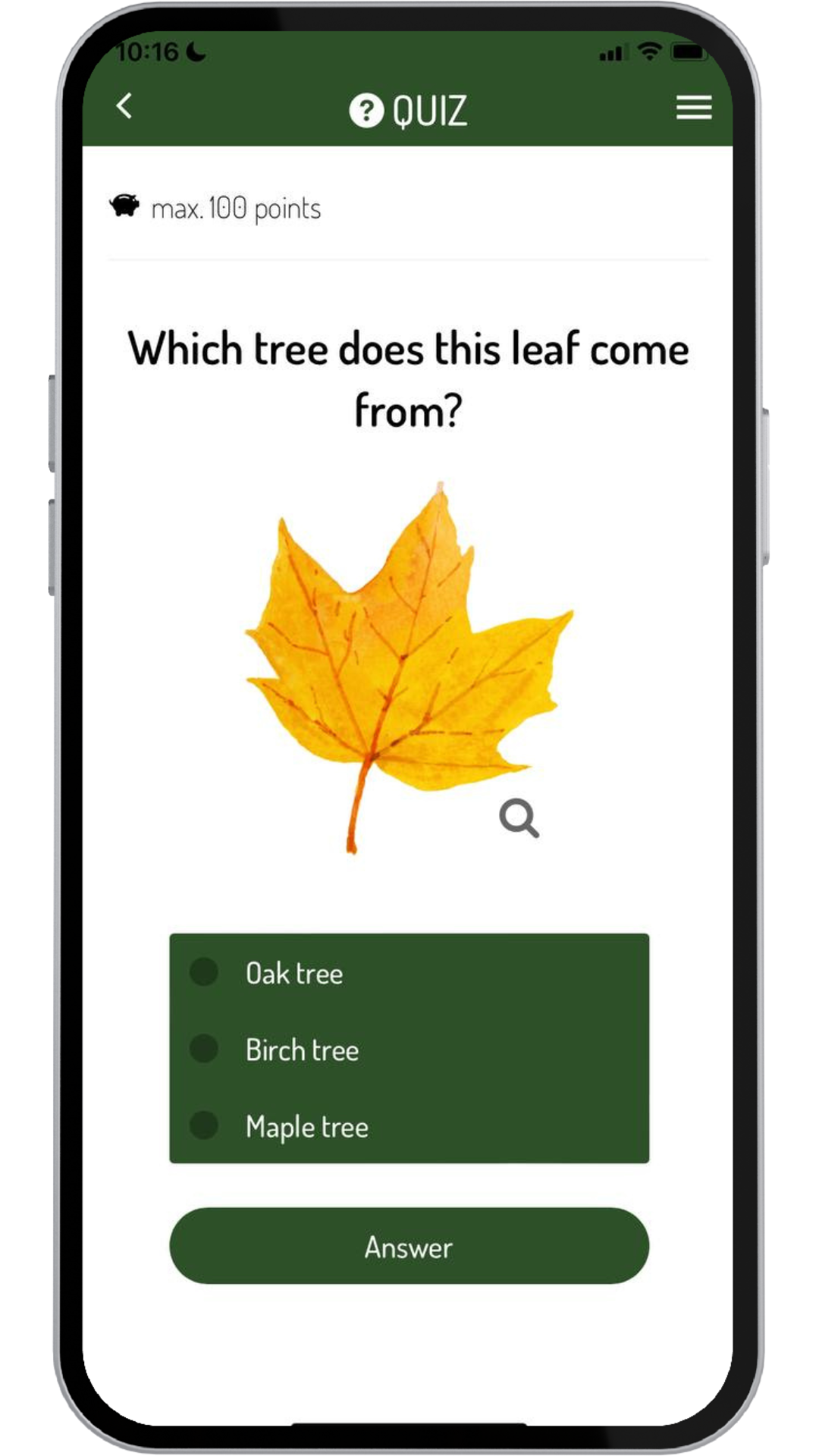Nature trails are a fantastic way to share knowledge about local flora and fauna. With Actionbound, these trails can become interactive – inviting visitors not just to consume information, but to actively engage with their surroundings. So what could a Bound like this look like? Let’s create a “Forest Explorer Bound” together!

The "Forest Explorer Bound" – Experiencing Nature for the Whole Family
Our Bound is based on a nature discovery trail. Along the way, there are many interesting information boards and stations that are engaging for both young and old. The Bound guides participants through different sections of the forest, where they solve tasks, crack riddles, and explore the forest in new ways through observation and playful challenges.
How to Design the Stations of Your Bound
Leaf Rally: Discover the Trees: Leaves from trees are perfect for various quizzes and creative tasks. For example, in a quiz element, you could show a maple leaf, and players have to figure out what the corresponding tree looks like. Or let your players create funny faces using leaves. A photo task will help preserve these leaf faces as a fun memory.
Decipher Animal Tracks: Who Was Here? By using photos and digital clues, participants must determine which animals have recently crossed their path. Tip for implementation: Add a GPS-based task where players photograph real tracks in the forest and compare them with a digital reference list.
Animal Sound Quiz: Listen to the Forest Participants listen to various bird and animal sounds via audio clips and try to identify them. Tip for implementation: Create a multiple-choice quiz with additional information about the animals after each answer.
Forest Sensory Path: Experience with All Senses Playful challenges such as “walking barefoot on the forest floor” or “feeling a tree with closed eyes” enhance perception. Tip for implementation: Use a voice note feature where players can record and listen to their impressions later.
Key Aspects of Creating a Bound
A successful Bound requires not only creative ideas but also a clear structure. Here are some important points to consider when planning and implementing your Bound:
Define your target audience: Think about who your Bound is for. Is it aimed at families with children, school groups, or perhaps adults interested in nature? The target audience determines the language, difficulty level, and type of challenges.
Test, test, test: Before publishing your Bound, test it yourself or have a test group go through it. This ensures that all tasks are understandable and that the route makes sense.
Balance knowledge and fun: A good Bound combines information with entertainment. Use different formats – quiz questions, creative tasks, or media content – to actively engage participants.
Check technical implementation: Ensure that all GPS points are correctly set and that media content loads properly. In remote forest areas, an offline version of the Bound can be especially useful.
Encourage interaction with the environment: The Bound should encourage participants to look closely, listen carefully, and interact with nature. Tasks that combine perception and movement make the experience even more immersive.
Conclusion: Your Own Forest Explorer Bound
An interactive Bound can take traditional nature trails to the next level. By incorporating playful tasks, knowledge is conveyed, curiosity is sparked, and nature is experienced more consciously. With creative elements, you can design your own Forest Explorer Bound and offer visitors an exciting adventure.
Have you already created a nature trail with Actionbound?


